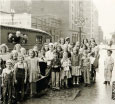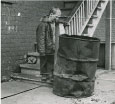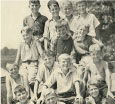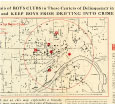In the St. Paul of the 1920s, playgrounds and recreation programs are non-existent. With few positive diversions for youth outside of school, the city faces an epidemic of juvenile delinquency. Boys and girls have regular run-ins with the police, and many are arrested and charged with prostitution and other crimes. Most of the disturbance is in the poor neighborhoods surrounding the Union Gospel Mission.
Public worry grows that troubled youngsters are becoming criminals, fears fanned by alarming news about gangs, crime sprees and boys with guns. Headlines from the era tell the story: “17 Boys in Court on Theft Charges”; “Girl Bandit Aids in Bold Holdup.”
These challenges help to inspire the Mission’s early preventative work. The goal: to give young people constructive activities and spiritual guidance as an alternative to delinquency and crime. By the 1930s, the Mission’s Boys’ Club and Girls’ Club, Sunday School outreach and Gospel Hill Camp engage hundreds of St. Paul youth, a commitment that grows over the next century.
Photos courtesy of the Union Gospel Mission.



